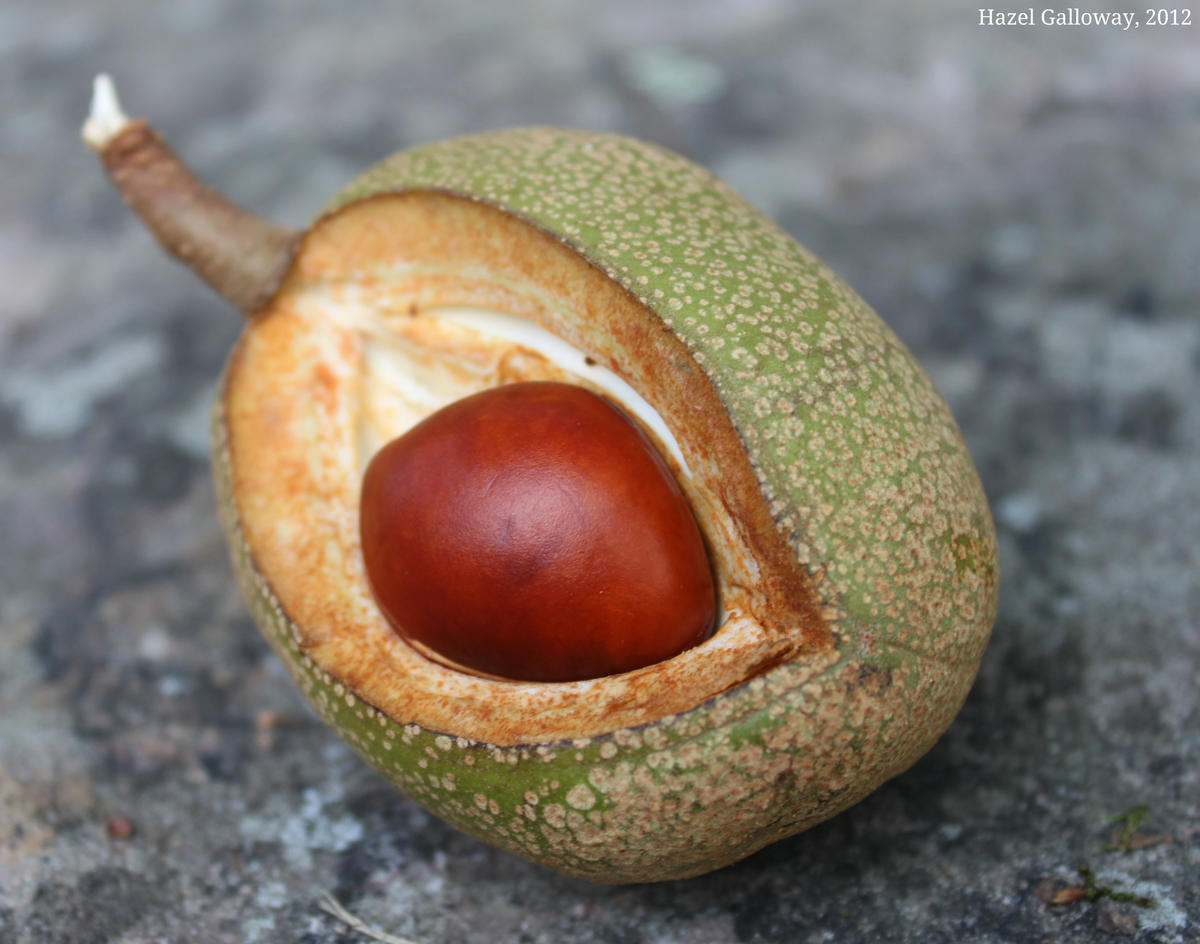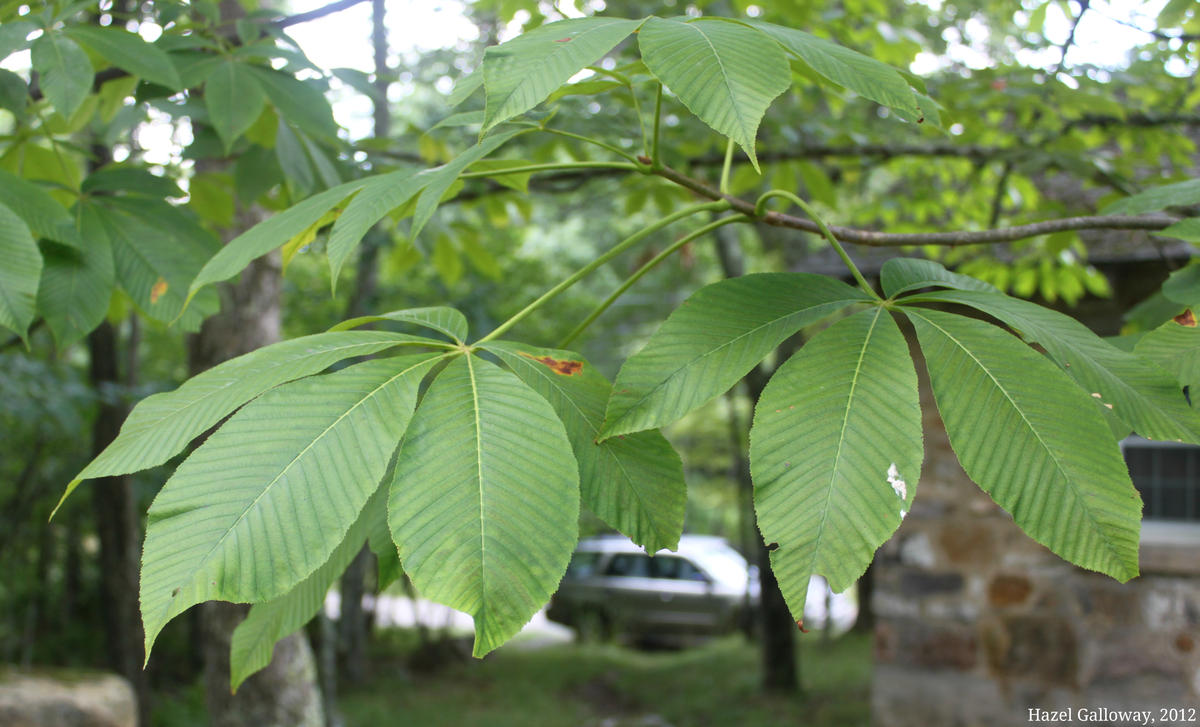This is the largest of the buckeyes native to the US, reaching around 23 m (75’) in height and 12 m (40’) in spread. These trees tend to be tall and upright with several main trunks, and the branches do not spread far out from the trunk, even with age. The leaves on the buckeye are palmately compound, with five (sometimes 4-7) leaflets present on each leaf. These leaflets, which are 8-18 cm long, are dark green and finely toothed on the outer edges. In the late spring, the buckeye tree produces hermaphroditic flowers (male and female organs in one flower) arranged in an upward-pointing panicle (a much-branched, compound inflorescence) 10-20 cm in length. The flowers, which are pale yellow-orange and tube-shaped, are often quite showy as the panicles rise above the exapnded foliage all over the tree. They are pollinated by bees.
In September-October, the buckeye fruits mature. These potato-shaped fruits have thick, leathery husks that enclose 1-3 seeds. This tree can be distinguished from other, similar trees by the smoothness of the exterior of the fruits, as opposed to species such as the Horse Chestnut, which have spiny exteriors. Upon falling to the ground, the buckeye fruits split open. The seeds contained within the fruits are a beautiful deep glossy brown color, with a large, lighter brown patch on one side—the “buck eye.”
These large seeds have an interesting story. They contain saponins, potent toxins which happen to be poorly absorbed by the human body. As a result, consuming these seeds rarely harms humans, but can be quite fatal to other animals. In fact, Native American hunting tribes have been known to put large quantities of buckeye seeds into the water of rivers or lakes, for the purpose of stupefying or killing the fish. However, these seeds are quite safe for both humans and animals once one has removed the toxins, usually by soaking or roasting the seeds. They are said to be as sweet as a chestnut when eaten whole, but can also be ground into coarse flour. Despite their poisonous nature, these seeds have long been carried as good-luck charms.
animals once one has removed the toxins, usually by soaking or roasting the seeds. They are said to be as sweet as a chestnut when eaten whole, but can also be ground into coarse flour. Despite their poisonous nature, these seeds have long been carried as good-luck charms.
The Yellow Buckeye thrives in the rich soil on river bottoms, on stream banks, and on mountain slopes. It has a fairly limited range, and can be found in the Appalachian mountains and valleys in central-eastern United States, from southeastern Pennsylvania to northern Alabama and west along the Ohio River Valley to Illinois. This buckeye fruit, not yet ripe, was found by Ariel as the result of a windfall. The trees can be found along Route 613 going down the mountain toward Pearisburg, as well as on the station. This leaf came from a large tree in front of Rafinesque.
- http://dendro.cnre.vt.edu/dendrology/syllabus/factsheet.cfm?ID=140
- http://hvp.osu.edu/pocketgardener/source/description/ae_flava.html
- http://www.missouribotanicalgarden.org/gardens-gardening/your-garden/plant-finder/plant-details/kc/b985/aesculus-flava.aspx
- http://www.pfaf.org/user/Plant.aspx?LatinName=Aesculus+flava



